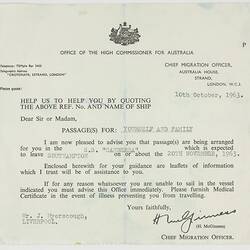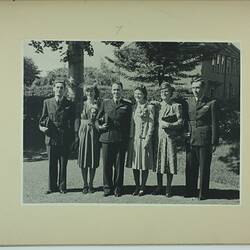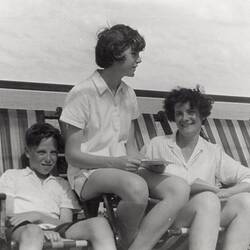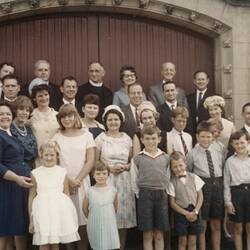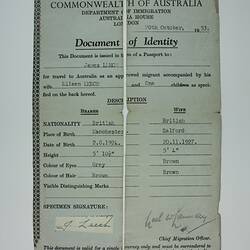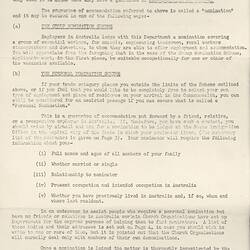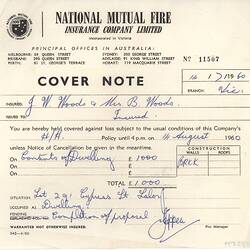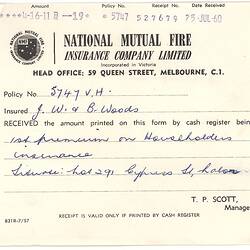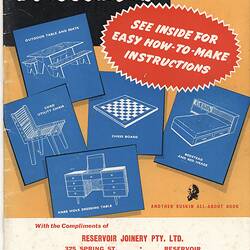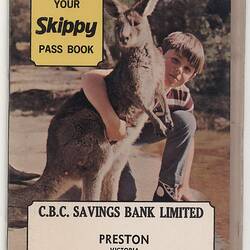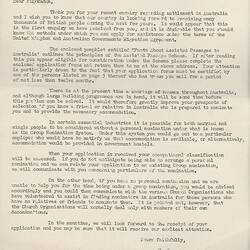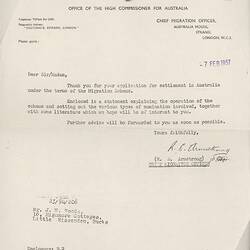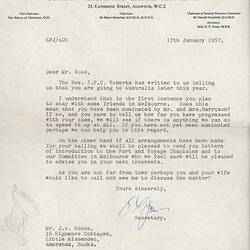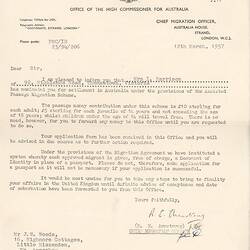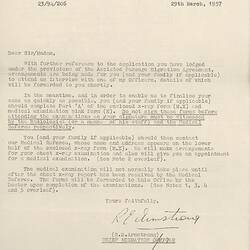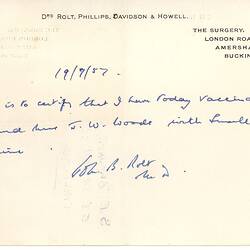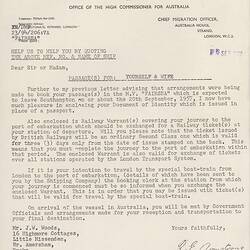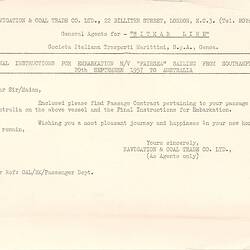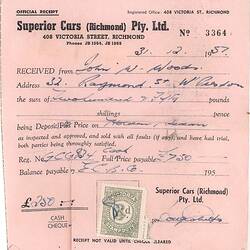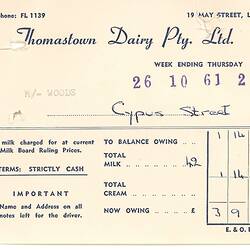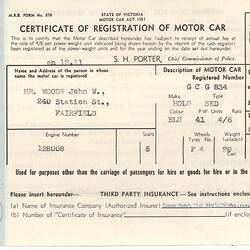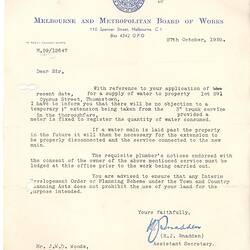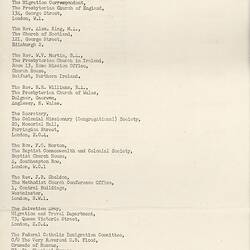Summary
Between 1947 and 1981, over a million Britons emigrated to Australia, the majority of whom travelled under the ten pound assisted passage scheme funded by the British and Australian governments (Hammerton; Thomson, 2005).
Between 1947 and 1981, over a million Britons emigrated to Australia, the majority of whom travelled under the ten pound assisted passage scheme funded by the British and Australian governments (Hammerton; Thomson, 2005). This large intake of British migrants was encouraged as part of Australia's 'populate or perish' nation-building initiative, which emerged in the aftermath of World War II (Tavan, 2005). As the name suggests, the scheme allowed for affordable travel to Australia, with the cost of an adult ticket a mere £10, and all children traveling for free by the 1960s (Hammerton; Thomson, 2005).
Whilst a great number of migrants from other cultural backgrounds also emigrated to Australia during this period, an emphasis was placed on the need to attract the British. This was because they were seen to be culturally close to Australians, and in theory were more likely than other immigrants to slot into the Australian way of life (Hammerton; Thomson, 2005). This preference was also in keeping with the 'White Australia' policy, implemented in the late-nineteenth century, which by the 1920s placed quotas on European migrant intake and which actively prioritised migrants from Great Britain (Tavan, 2005). In the 1940s the policy came under criticism by government officials who were concerned about building opposition from neighbouring Asian countries. However, when the Commonwealth Department of Immigration was established in 1945, it was clear that while a commitment to admitting European migrants into the country was formalised, the intent to target British migrants was evident. Arthur Calwell, the first minister for Immigration, made the following pledge in 1946: 'Australia hopes that for every foreign migrant there will be ten people from the United Kingdom' (Tavan, 2005).
The ten pound assisted passage scheme proved extremely popular, with two clear waves of migration occurring, firstly in the immediate post-war period, and then peaking in the 1960s. These 'Ten Pound Poms', as they became known (82% were English) were mostly from an urban background (Jupp, 2004) and were motivated by various factors: to escape post-war austerity, to take advantage of a warmer climate and an outdoor lifestyle, or to fulfil a sense of adventure. Migrants were required to stay in Australia for two years, giving up their passports on arrival, able only to return to Britain if they paid back their outward fare in full, in addition to paying for their journey home (Hammerton; Thomson, 2005). At the beginning of the period there was a focus on assisting migrants who had certain skill-sets, such as building tradesmen or nurses, but by the 1960s there was less emphasis placed on these requirements. A preference for married migrants to be under the age of 51 and for single migrants to be under 46 remained, and health checks were conducted to ensure applicants suffering from diseases such as tuberculosis were not accepted (Jupp, 2004).
The failure to meet migration targets around the 1950s sparked the creation of additional schemes. In 1957, this concern over dwindling British migrant numbers provoked the 'Bring out a Briton Campaign', encouraging Australians to sponsor British migrants (Richards, 2008). This was followed by the 1959 'Nest Egg' scheme which offered assisted passage to migrants who had savings of at least £500, allowing them to buy a house on arrival in Australia (Hammerton; Thomson, 2005). Although the majority of British migrants came to Australia on assisted passage schemes during the period, a number also organised their own accommodation and employment, paying the full fare for their journey.
For those who were lucky enough to have existing family in Australia or for those who were nominated by an Australian company or citizen, accommodation was usually sorted before they arrived. However, for the majority emigrating with no connections and often little funding, they found themselves destined to stay in migrant hostels on arriving in Australia. Hostel conditions left much to be desired from most accounts, providing only basic living arrangements, usually set up inside former Nissan huts used during the War (Jupp, 2004). The hostels were only intended to accommodate migrants for a short time, until they were able to save money and buy their own home, and whilst for many the incentive to leave hostels spurred them on to better conditions, many others ended up staying in the hostels until they had completed the required two years and they were able to return home. The British migrants that complained about hostel conditions soon obtained the nickname, 'whingeing Poms', which became a source of mockery for many Australians who encountered the new arrivals (Hammerton; Thomson, 2005). It has been estimated that just over 25% of migrants returned to Britain in this period, many due to homesickness and an inability to make a life in Australia. However, between a third and half of these return migrants became 'Boomerang Poms', eventually re-emigrating to Australia (Hammerton; Thomson, 2005).
In 1948, Australia's Nationality and Citizenship Act was passed, allowing British migrants to apply for citizenship after residing in the country for one year. This was a marked difference between the British and other foreign migrants who had to wait five years before they could apply. The British enjoyed many privileges, even if they weren't citizens, including the right to vote and the ability to enter and leave Australia freely (Hammerton; Thomson, 2005). However, by 1 January 1975, a visa was required for all those entering the country, and even British non-citizens who had been residing in Australia for many years needed a re-entry visa if they decided to leave the country (Jupp, 2004). From 1973, the cost of a family's passage to Australia had increased to £75, and over the next decade the numbers of British migrants taking up assisted passage steadily declined (Jupp, 2004). The assisted passage scheme finally came to an end in 1981, and all immigrants, British or otherwise, had to pay for their own journey to Australia (Appleyard, 1988).
References
Appleyard, R., (1988) The Ten Pound Immigrants, Boxtree: London
Constantine, S., 'British Emigration to the Empire-Commonwealth since 1880: From Overseas Settlement to Diaspora?' in Bridge, C. and Fedorowich, K. (eds.) (2003) The British World: Diaspora, Culture and Identity, Routledge: Oxon
Hammerton, J. and Thomson, A. (2005) Ten Pound Poms: Australia's Invisible Migrants, Manchester University Press: Manchester
Jupp, J. (2004) The English in Australia, Cambridge University Press: Cambridge
Richards, E., 'Migrations: The Career of White Australia' in Schreuder, D. M. and Ward, S. (eds.) (2008) Australia's Empire, Oxford University Press: Oxford; New York
Tavan, G. (2005) The Long, Slow Death of White Australia, Scribe Publication: Carlton North, Vic.
More Information
-
Keywords
-
Authors
-
Article types

